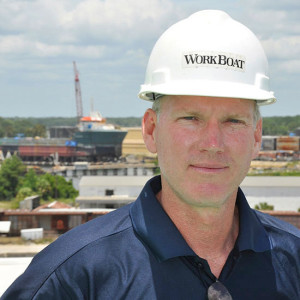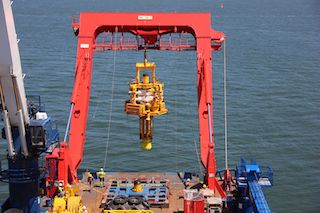On Thursday, the Bureau of Safety and Environmental Enforcement (BSEE) announced that it oversaw the testing of Shell’s proposed Arctic-ready capping stack system in Puget Sound to ensure compliance with stringent Federal safety standards for oil and gas exploration on the Arctic Outer Continental Shelf.
A key piece of Arctic oil exploration containment equipment, the capping stack is used to contain the flow of oil in the unlikely event all primary and backup blowout prevention equipment fails during drilling. It is required to be in position for all of Shell’s potential drilling activities in the Arctic.
During tests this week, BSEE personnel witnessed the deployment and maneuvering of the capping stack off the rear deck of the 317'x85' Fennica to 150 feet of water, which is deeper than Shell’s current well sites in the Chukchi Sea. BSEE confirmed that the capping stack functioned properly under pressures exceeding the maximum expected pressures Shell may encounter in the Arctic. Deployment of the capping stack and stack pressure testing were completed in two separate exercises spanning two days. The 4,800-dwt multipurpose service vessel Fennica is part of Arctia Offshore´s icebreaker fleet.
BSEE is currently reviewing Shell’s request to drill two exploratory wells in the Chukchi Sea this summer. If BSEE approves the drilling permits, Shell would be required to maintain the capping stack in a ready-to-deploy state on the Fennica, which would be available to respond to a loss of well control within 24 hours.
In addition to containment and engineering observations such as the ones conducted this week, BSEE is overseeing additional on-water oil spill response exercises and drills and on-site inspections of oil spill response equipment throughout the proposed drilling operation. BSEE will conduct a variety of equipment inspections and deployment exercises, some of which may be unannounced, to validate the tactics, logistics, resource availability, and personnel proficiency specified and relied upon in the approved plans and permits.





